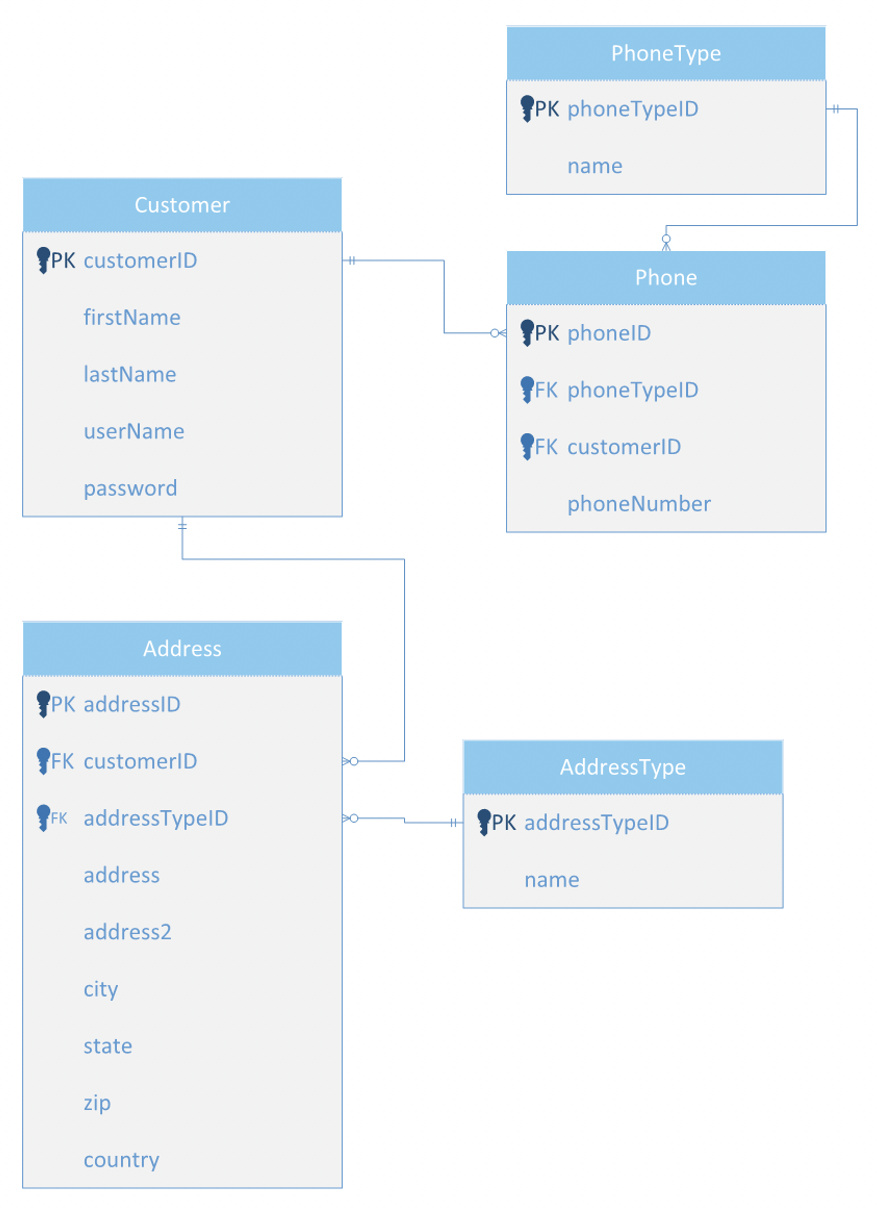Look at the database design from the prior tutorial to help us review the issues with an overly-complex ERD:

You have to determine this early on, as the more complex a database design is, the more work it is not only to join the data, but to create the underlying application code to make use of these tables. More validation and checks have to happen to manage and provide information on the data to be more consistent. Let us look just at the customer table to compare a complex and simple data model, given the business rules you have defined.
You will see that in the complex design, the customer table is simpler, with separate tables to list phone numbers and addresses allowing as many values as possible. In reality, most customers only store a single shipping address, billing address, and phone number for a vendor.

There can certainly be exceptions, and this type of format will account for that.
However, for a simpler scenario where there is not as much repeat business, a single table could suffice:

Whether to use a simple or complex design will be dependent on the business rules within the organization. If you focus on having full flexibility, you will introduce a lot more complexity not only in the database design but for all other components that link to the database. However, the data model may adapt more easily for scalability than a simpler model would, especially if business rules change, and it will reduce redundancy.
Source: Authored by Vincent Tran